Ehsan Roohi Golkhatmi | |
|---|---|
.jpg.webp) Roohi in 2023 | |
| Born | |
| Alma mater | Sharif University of Technology Ferdowsi University of Mashhad |
| Scientific career | |
| Institutions | University of Maryland Xi'an Jiaotong University Ferdowsi University of Mashhad |
| Thesis | Developing a Hybrid Molecular-Continuum Algorithm to Simulate Gas Flow in Micro-Nano Propulsion Systems (2010) |
Ehsan Roohi (born in Mashhad, Iran, in July 1982) is a research fellow at the School of Medicine at the University of Maryland. He has a Ph.D. in aerospace engineering. He was a University Professor at the Ferdowsi University of Mashhad[1] and Xi'an Jiaotong University.[2]
Research
Ehsan Roohi mainly works on novel and intelligent collision models in the direct simulation Monte Carlo (DSMC) technique framework to make the rarefied flow simulations more accurate and less time-consuming.[3] The collision process is the most sophisticated part of DSMC, which is treated probabilistically.[4] He has demonstrated the shortcomings of conventional collision models[5] and has been developing innovative intermolecular collision paradigms in the framework of the DSMC. In 2015, he improved the “Simplified Bernoulli” trial (SBT) collision model[6] by introducing an intelligent version,[7] and he was the lead developer of a new collision model called the “Generalized Bernoulli” trial (GBT) scheme in 2018.[8] In 2022, he developed another model, the “Symmetrized and Simplified Bernoulli” trial (SSBT) scheme,[9] that has improved performance compared to previous ones.

In the same year, Stefan Stefanov and he suggested a hybrid collision scheme on transient adaptive subcells to treat various types of rarefied gas flows at the hypersonic regime.[10]
He has been developing numerical tools to perform simulations of hypersonic space re-entry vehicles, waveriders, and propulsion of arrays of small-scale satellites much faster with high reliability.[11] During his research career, he contributed to developing the very first open-source DSMC code in the framework of OpenFOAM, i.e., dsmcFoam.[12] His next plan is to incorporate physics-informed machine learning and deep learning methods into ab-inito collision models for hypersonic and non-equilibrium flow simulations.
He also works on designing next-generation micro-scale pumps and propulsion systems that exploit heat losses and produce propulsion force and flow motion without requiring pressure gradients. This is done using DSMC simulations and is now extended using machine learning. A thin vane immersed in a rarefied gas with a temperature gradient across its surfaces will produce a force that tends to move the vane from the hot side to the cold side. This is the Crookes radiometer. He has been creating and developing novel concepts in thermal ratchet (rather than using the vanes) pumps and propulsion systems using either an intelligent selection of wall reflection properties or surface morphologies.[13] He was the first to demonstrate that the working mechanism of ratchet pumps and propulsion systems is based on radiometric forces.
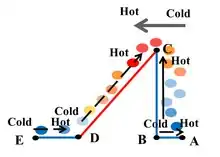
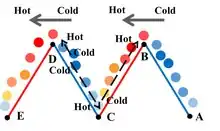
[14] He was the first researcher to use these pumps for rarefied gas species separation.[15] This topic is exciting in MEMS/NEMS (Micro/nano-electro-mechanical systems) and aerospace communities and impacts technological developments in both fields. The former seeks extra-small scale pumps for miniaturized devices, while the latter is interested in propulsion systems for space applications, like thrust production for space vehicles and orbit control of lightweight satellites.
In addition to his research in rarefied gas dynamics, he works on bio-inspired techniques to mitigate the destructive impacts of cavitation on the performance of hydraulic machinery.
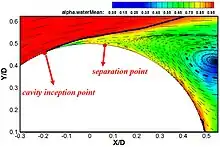
He recently worked on wavy leading hydrofoils inspired by a particular species of Humpback whale.[16] He showed that the cavitation weakens on the modified geometry, delaying the stall. He also used hybrid surface wettability to control the devastating effects of cavitation.

[17] Additionally, he works on novel subgrid-scale (SGS) models in the large eddy simulation (LES) approach for turbulent flows. For the first time, various modern SGS, such as modulated gradient (MG) and anisotropic minimum dissipation (AMD) models, were considered, modified, and implemented in the OpenFOAM framework.[18],[19]
Awards and honors
Based on his research activities, Ehsan Roohi won the Distinguished Young Researcher in Mechanical Engineering award in 2019 in Iran, given by Academy of Sciences of Iran.[20][21][22]
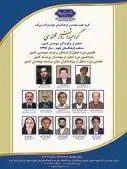 Academy of Sciences of Iran announcement for the Distinguished Young Researcher in Mechanical Engineering award, 2019
Academy of Sciences of Iran announcement for the Distinguished Young Researcher in Mechanical Engineering award, 2019
Contribution to the scientific community
Ehsan Roohi has performed over 571 verified reviews.[23] He has been Associate Editor of the ASME Journal of Fluid Engineering since 2022[24] and Associate Editor of the International Journal of Modern Physics C since 2023.[25] He and Yonghao Zhang were the Guest Editors in Physics of Fluids in 2020-2021 for a special issue on "Advances in micro/nano fluid flows: In Memory of Professor Jason Reese".[26] Currently, he is the Guest Editor in Fluids for a special issue on "Rarefied Gas Flows: From Micro-Nano Scale to Hypersonic Regime".[27] He is among the 1% of highly cited researchers in ESI since 2021.[28]
Teaching
Ehsan Roohi used the open courseware system of the Ferdowsi University of Mashhad to distribute his class teaching lecture videos;.[29] His teaching score in Ferdowsi University of Mashhad, according to an Iranian teacher evaluation service, is 4.4 out of 5[30]
Books and papers authored
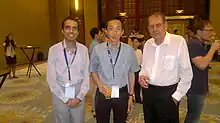
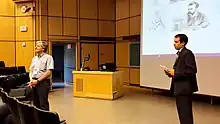
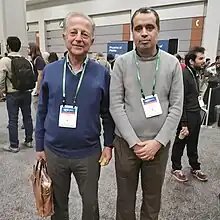
Ehsan Roohi has published three textbooks, Gas Dynamics,[31] Fluid Mechanics at Micro and Nano Scales,[32] and Rarefied Gas Dynamics and Direct Simulation Monte Carlo.[33]
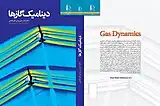 Gas Dynamics, 2019
Gas Dynamics, 2019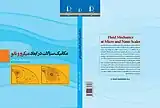 Fluid Mechanics at Micro and Nano Scales, 2020
Fluid Mechanics at Micro and Nano Scales, 2020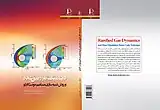 Rarefied Gas Dynamics and Direct Simulation Monte Carlo, 2021
Rarefied Gas Dynamics and Direct Simulation Monte Carlo, 2021
According to the data provided by Scopus, he has published 127 papers and has an h-index of 35 with more than 3355 total citations.[34] He has an h-index of 37 in Google Scholar.[35] He has published two journal papers in Physics Reports, a prestigious journal with an impact factor of 30.[4][36]
References
- ↑ "Ehsan Roohi - About me". prof.um.ac.ir.
- ↑ "Welcome - Roohi Golkhatmi Ehsan Roohi Golkhatmi Ehsan - 教师个人主页". Roohi Golkhatmi Ehsan Roohi Golkhatmi Ehsan.
- ↑ "Direct simulation Monte Carlo".
- 1 2 Roohi, Ehsan; Stefanov, Stefan (2016). "Collision partner selection schemes in DSMC: From micro/Nano flows to hypersonic flows". Physics Reports. 656: 1–38. Bibcode:2016PhR...656....1R. doi:10.1016/j.physrep.2016.08.002.
- ↑ Akhlaghi, Hassan; Roohi, Ehsan; Stefanov, Stefan (2018). "On the consequences of successively repeated collisions in no-time-counter collision scheme in DSMC". Computers & Fluids. 161: 23–32. doi:10.1016/j.compfluid.2017.11.005.
- ↑ Stefanov, Stefan K. (January 25, 2011). "On DSMC Calculations of Rarefied Gas Flows with Small Number of Particles in Cells". SIAM Journal on Scientific Computing. 33 (2): 677–702. Bibcode:2011SJSC...33..677S. doi:10.1137/090751864 – via CrossRef.
- ↑ https://pubs.aip.org/aip/pof/article-abstract/27/10/107104/314632/A-novel-simplified-Bernoulli-trials-collision?redirectedFrom=fulltext
- ↑ Roohi, Ehsan; Stefanov, Stefan; Shoja-Sani, Ahmad; Ejraei, Hossein (2018). "A generalized form of the Bernoulli Trial collision scheme in DSMC: Derivation and evaluation". Journal of Computational Physics. 354: 476–492. Bibcode:2018JCoPh.354..476R. doi:10.1016/j.jcp.2017.10.033.
- ↑ https://pubs.aip.org/aip/pof/article-abstract/34/1/012010/2845513/A-symmetrized-and-simplified-Bernoulli-trial
- ↑ https://pubs.aip.org/aip/pof/article-abstract/34/9/092003/2844541/A-novel-transient-adaptive-subcell-algorithm-with?redirectedFrom=fulltext
- ↑ Goshayeshi, Bijan; Roohi, Ehsan; Stefanov, Stefan (2015). "DSMC simulation of hypersonic flows using an improved SBT-TAS technique". Journal of Computational Physics. 303: 28–44. Bibcode:2015JCoPh.303...28G. doi:10.1016/j.jcp.2015.09.027.
- ↑ Scanlon, T.J.; Roohi, E.; White, C.; Darbandi, M.; Reese, J.M. (2010). "An open source, parallel DSMC code for rarefied gas flows in arbitrary geometries". Computers & Fluids. 39 (10): 2078–2089. doi:10.1016/j.compfluid.2010.07.014.
- ↑ Lotfian, Ali; Roohi, Ehsan (2019). "Radiometric flow in periodically patterned channels: Fluid physics and improved configurations". Journal of Fluid Mechanics. 860: 544–576. Bibcode:2019JFM...860..544L. doi:10.1017/jfm.2018.880. S2CID 125513225.
- ↑ Shahabi, Vahid; Baier, Tobias; Roohi, Ehsan; Hardt, Steffen (2017). "Thermally induced gas flows in ratchet channels with diffuse and specular boundaries". Scientific Reports. 7: 41412. Bibcode:2017NatSR...741412S. doi:10.1038/srep41412. PMC 5269730. PMID 28128309. S2CID 9424560.
- ↑ Lotfian, Ali; Roohi, Ehsan (2021). "Binary gas mixtures separation using microscale radiometric pumps". International Communications in Heat and Mass Transfer. 121. doi:10.1016/j.icheatmasstransfer.2020.105061. S2CID 230552311.
- ↑ Pendar, Mohammad-Reza; Esmaeilifar, Esmaeil; Roohi, Ehsan (2020). "LES study of unsteady cavitation characteristics of a 3-D hydrofoil with wavy leading edge". International Journal of Multiphase Flow. 132. doi:10.1016/j.ijmultiphaseflow.2020.103415. S2CID 224973780.
- ↑ Mousavi, S Mahmood; Roohi, Ehsan (2023). "On the effects of hybrid surface wettability on the structure of cavitating flow using implicit large eddy simulation". Journal of the Taiwan Institute of Chemical Engineers. 148. doi:10.1016/j.jtice.2023.104828. S2CID 257712955.
- ↑ Larkermani, Elyas; Roohi, Ehsan; Porté-Agel, Fernando (2018). "Evaluating the modulated gradient model in large eddy simulation of channel flow with OpenFOAM". Journal of Turbulence. 19 (7): 600–620. Bibcode:2018JTurb..19..600L. doi:10.1080/14685248.2018.1483078. S2CID 126168021.
- ↑ Zahiri, Amir-Pouyan; Roohi, Ehsan (2019). "Anisotropic minimum-dissipation (AMD) subgrid-scale model implemented in OpenFOAM: Verification and assessment in single-phase and multi-phase flows". Computers & Fluids. 180: 190–205. doi:10.1016/j.compfluid.2018.12.011. S2CID 126359028.
- ↑ "انتخاب استاد دانشگاه فردوسی به عنوان پژوهشگر برجسته جوان کشور". 31 January 2019.
- ↑ "انتخاب دانشیار دانشگاه فردوسی مشهد بعنوان پژوهشگر جوان برجسته مهندسی مکانیک".
- ↑ https://eng2.um.ac.ir/images/78/golkhatmi.dr.jpg
- ↑ "Web of Science".
- ↑ "Journals Publications - Journal of Fluids Engineering".
- ↑ "IJMPC Editorial Board".
- ↑ https://pubs.aip.org/aip/pof/article/33/4/040402/1040120/Advances-in-micro-nano-fluid-flows-In-Memory-of
- ↑ "Fluids".
- ↑ "۷ عضو هیئت علمی دانشگاه فردوسی مشهد در فهرست یک درصد دانشمندان برتر قرار گرفتند".
- ↑ "احسان روحی گل خطمی – سامانه فیلمهای آموزشی OCW دانشگاه فردوسی مشهد".
- ↑ "احسان روحی گل خطمی | تماس، ارزیابی تدریس و نمره دهی - اُستادیو". ostadio.net.
- ↑ "دینامیک گازها".
- ↑ "مکانیک سیالات در ابعاد میکرو و نانو".
- ↑ "دینامیک گاز رقیقشده و روش شبیهسازی مستقیم مونت کارلو".
- ↑ "Scopus preview - Roohi, Ehsan - Author details - Scopus". www.scopus.com.
- ↑ "Ehsan Roohi (高易山)". scholar.google.com.
- ↑ Akhlaghi, Hassan; Roohi, Ehsan; Stefanov, Stefan (2023). "A comprehensive review on micro- and nano-scale gas flow effects: Slip-jump phenomena, Knudsen paradox, thermally-driven flows, and Knudsen pumps". Physics Reports. 997: 1–60. Bibcode:2023PhR...997....1A. doi:10.1016/j.physrep.2022.10.004. S2CID 253785391.
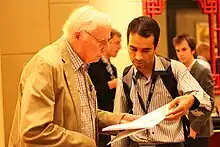
.jpg.webp)